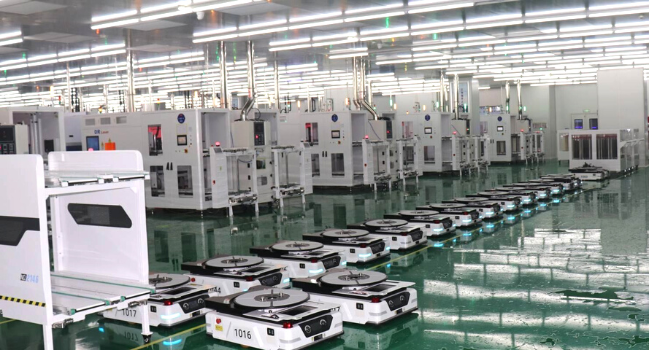
Standard Robots delivered 63 Oasis 600C-SRL mobile robots to a solar manufacturing plant, automated all internal logistics reduced manual processes by connecting production lines. One of the most significant mobile robot automation projects in the PV industry.
PROJECT BACKGROUND
In recent years, the photovoltaic industry maintained rapid growth and continuous expansion in scale while pursuing the goals of carbon peak and neutrality worldwide. While the market demand for solar modules keeps growing, the technology of automated machinery and logistics robots has become more advanced to meet the productivity demands.
Currently, the automation levels of the PV production lines have been further improved to connect processes with mobile robots gradually. Standard Robots were entering the PV industry as part of a larger project led by S.C New Energy Technology Corporation to build an entire fully automated solar cells manufacturing facility. As an independent mobile robot company, Standard Robots provided a flexible automation solution that included 63 AMRs to help the project achieve fully automated material handling for the entire factory.
"The implementation of the Oasis 600C-SRL with S.C energy was a pilot implementation in the PV industry. This project signals our commitment to accelerate solar energy development for the world's future environment and to see the intelligent manufacturing adopted by many other industries," says Henry Wong, VP of Strategy at Standard Robots.
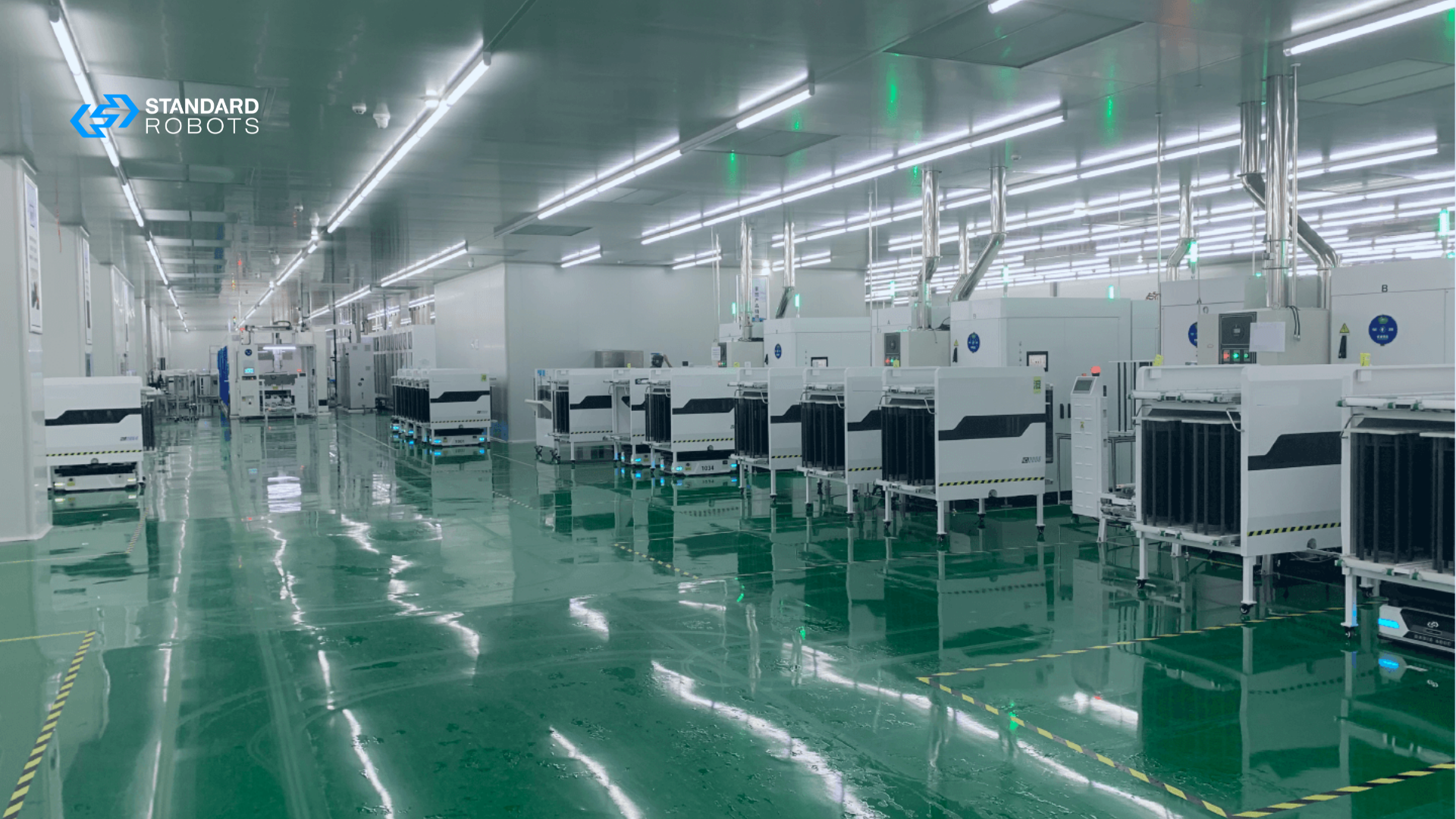
CONNECTING A SERIES OF LENGTHY PROCESS STEPS - FLEXIBLE LOGISTICS SOLUTION FOR SOLAR CELLS EMERGES
In solar cell production, wafers pass through many inline processes. Robots and automatic equipment handle the fragile silicon wafers on their way to and from inline machines such as a wet bench or inline PECVD. To reliably fulfill specifications for the shortest cycle times with the lowest breakage rates, Standard Robots has deployed 63 Oasis 600C mobile robots to cover the entire production floor. With a total transport distance of 2400 (twenty-four hundred) meters, loading and unloading WIP solar cells using customer-made wafer cassettes.
These specially made open wafer cassette shelves travel throughout the facility, connecting different production processes using the 600C with a lifting module. Replace all manual martial handling and internal logistics, including processes between warehouse dispatching to texturing machine, diffusion process, the batch and inline processes of laser scribing, etching/polishing, deposition, cleaning, drying, film, and cell sorting and packaging.
The company director said, "The 63 AMRs have successfully released about 90 workers from their logistics task and refocused their attention on technical posts. 100% automatic material handling will be achieved when the operation is stable. It has reduced production costs and significantly improved capacity and safety."
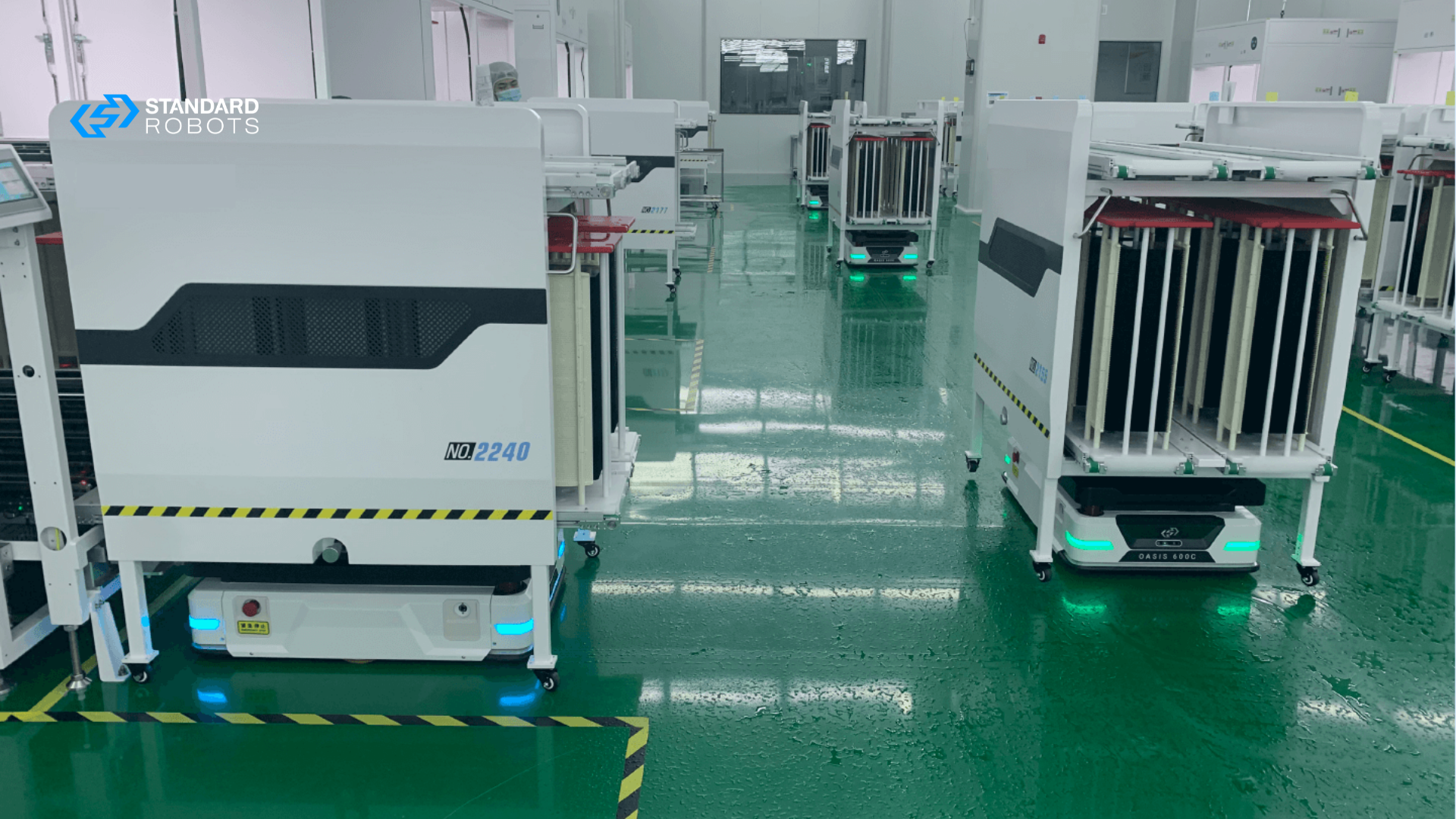
MATCHING THE REQUIREMENTS OF MODERN SOLAR CELL MANUFACTURING
Autonomous Mobile Robots based on SLAM navigation are highly expected to satisfy actual production requirements, deal with internal logistics gridlock, streamline work processes, and reduce related operational costs. In addition, The Oasis 600C AMR's highly precise docking accuracy makes the solar cell cassettes rack belt powerless since the power will be supplied from the inline process machines when docking is connected. This reduces future maintenance costs and initial investment costs.
In operation, The 600C handling capacity is strict due to the tight production schedule and the 5 minutes delivered challenging time constraints by specific processes. The AMRs managed by the self-developed Fleet Management System (FMS), which allows them flexibly handle cassette delivery and replenishment for long-distance, multi-point with high-frequency requests.
In line with the working environment requirements, the Oasis 600C is equipped with due diagonal laser radars and visual cameras to detect 360° obstacles, maintaining a navigation accuracy of ±5mm. In addition, the multiple build-in safety features allow mobile robots to match the operating conditions on the highly complex solar cell manufacturing floors. Moreover, the PV industry has strict dust and particles requirements, and Oasis AMRs encapsulated design ensures exemplary cleanroom suitability with ISO 14644-100 Clean Room Classifications.
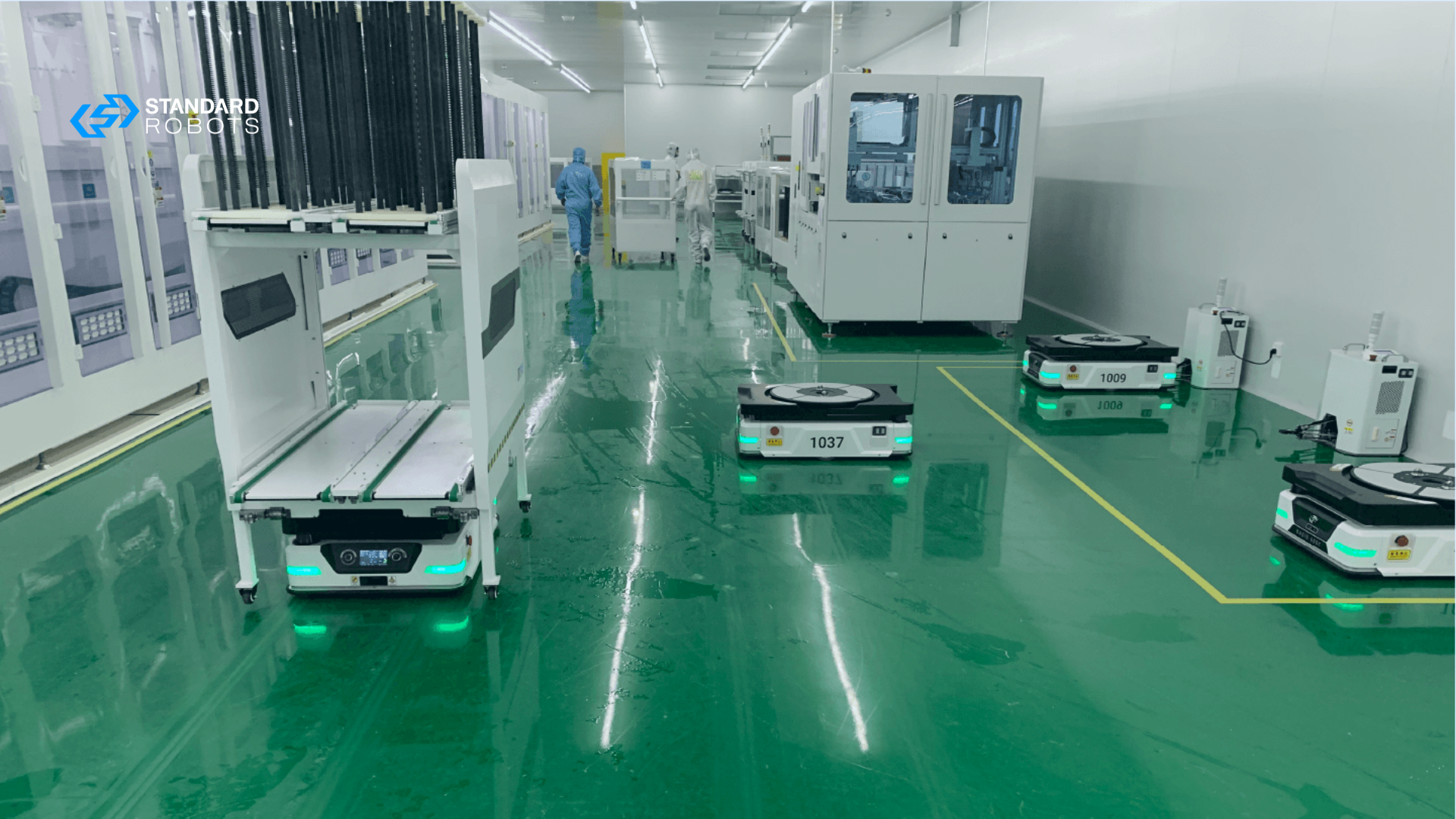
HIGHLY ADAPTABLE SOFTWARE TO SUPPORT SMOOTH INTEGRATION
It's easy to program and offers centralized control over multiple mobile robots working as a fleet. However, coordinating the fleet with external systems and 3rd-party equipment in a mass solar cell production facility is challenging.
S.C New Energy is recognized as a leader of automation solutions providers in the field of solar cell manufacturing. The full range of high-quality automatic machinery and inline equipment are controlled by their MCS task scheduling system and the factory MES. Standard Robots' Fleet Management System has that excellent adaptability, which perfectly matches various systems of S.C energy to provide an intelligent automation solution.
The integrated full information-based equipment management solution can monitor the operational status of each AMR in real-time, inventory stocktake, and production lines data analysis. In addition, the digital management for on-site storage has further optimized material handling and accelerated replenishment of production lines efficiently and accurately.
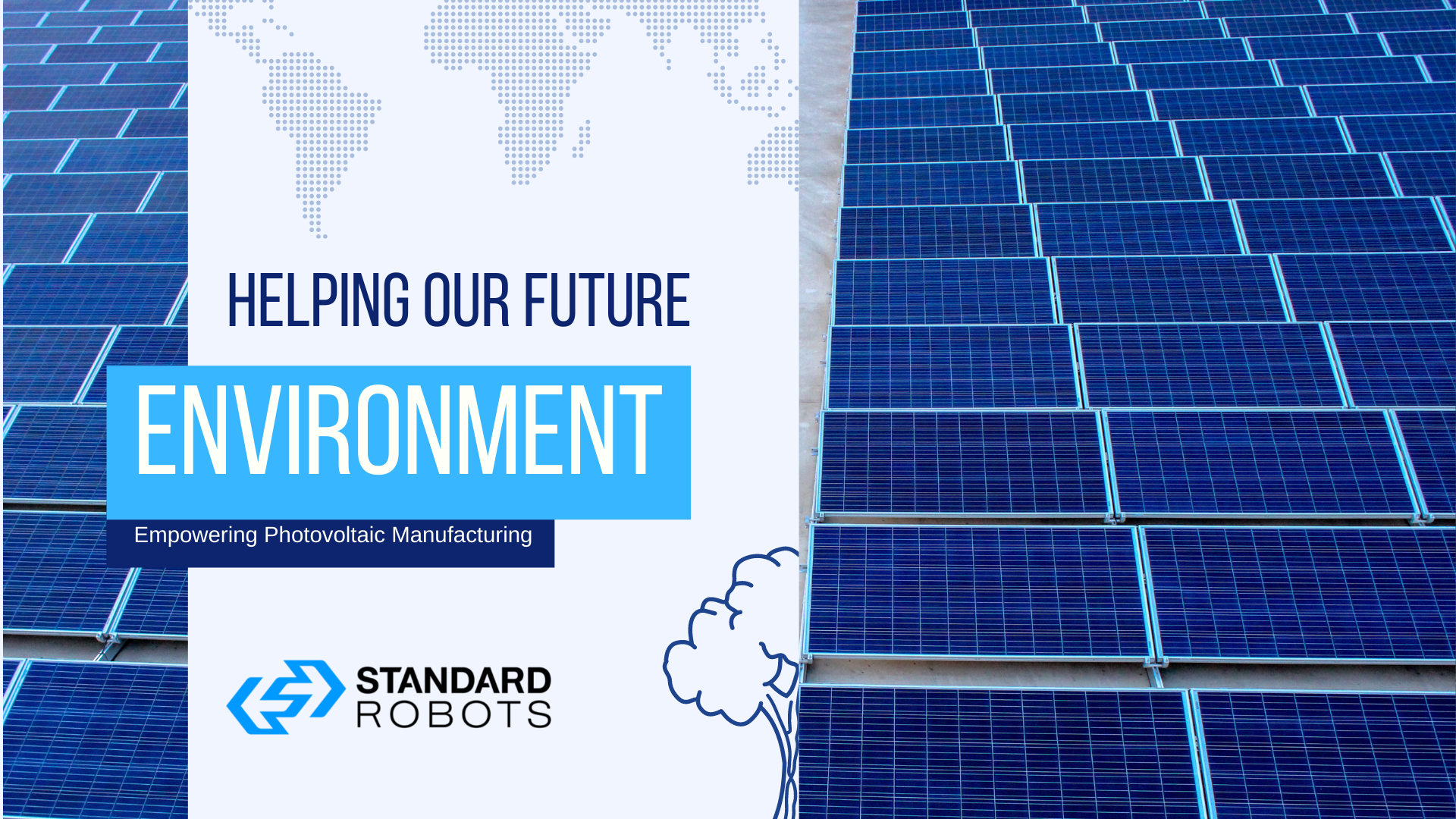
ROI IN JUST OVER A YEAR
Cost is a crucial consideration for companies undertaking automation solutions. Standard Robots' flexible AMR solutions are optimized in this regard, offering self-developed hardware and software that are more cost-efficient than integrated AMR providers. Moreover, unlike the magnet tape or texture QR code AGV solutions, flexible AMRs require no additional infrastructure in the factory environment. As a result, they have significantly reduced the deployment time and related costs.
Standard Robots deployment eliminated excessive manual work and optimized human resource allocation. This enabled company to utilize talent more effectively and empowered its employees to do more valuable work. Therefore, the business estimates that the 600C free the equivalent of 90 full-time employees from pushing cassettes around the factory.
The company revenue has increased dramatically since the automation project began, and the deployment of the Oasis C600 is an example of a successful implementation that is assisting the company in meeting its goals. In addition, the 600C has proven so effective that it has been adopted as a pilot project for other solar cell manufacturing facilities. S.C Energy is already planning the next stage for integrating the Oasis 600C mobile robot, which will significantly reduce employee training costs.
